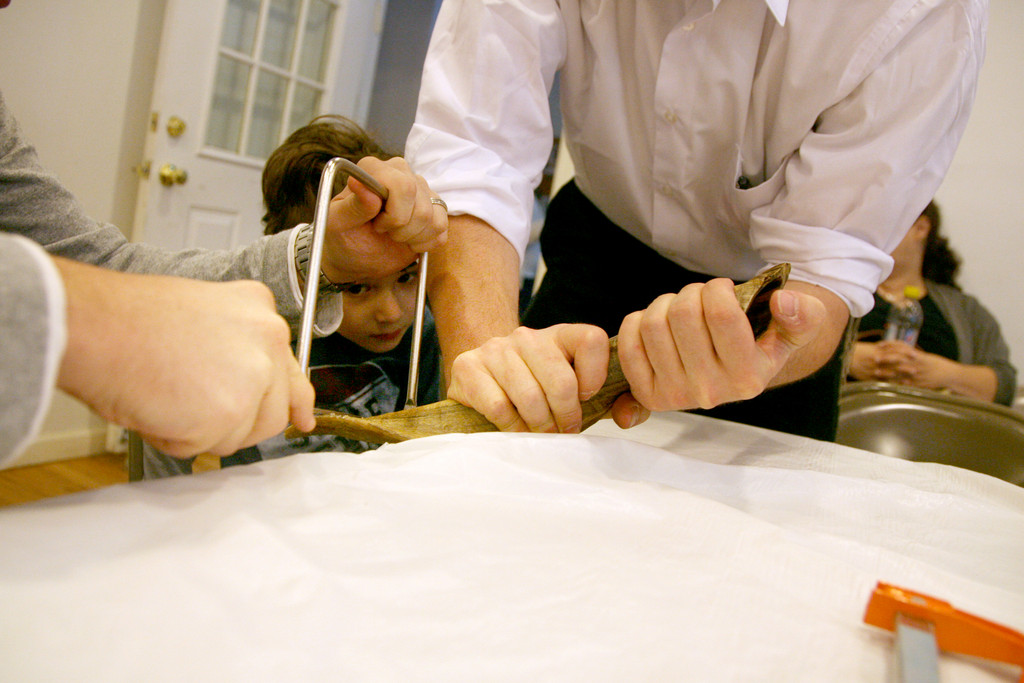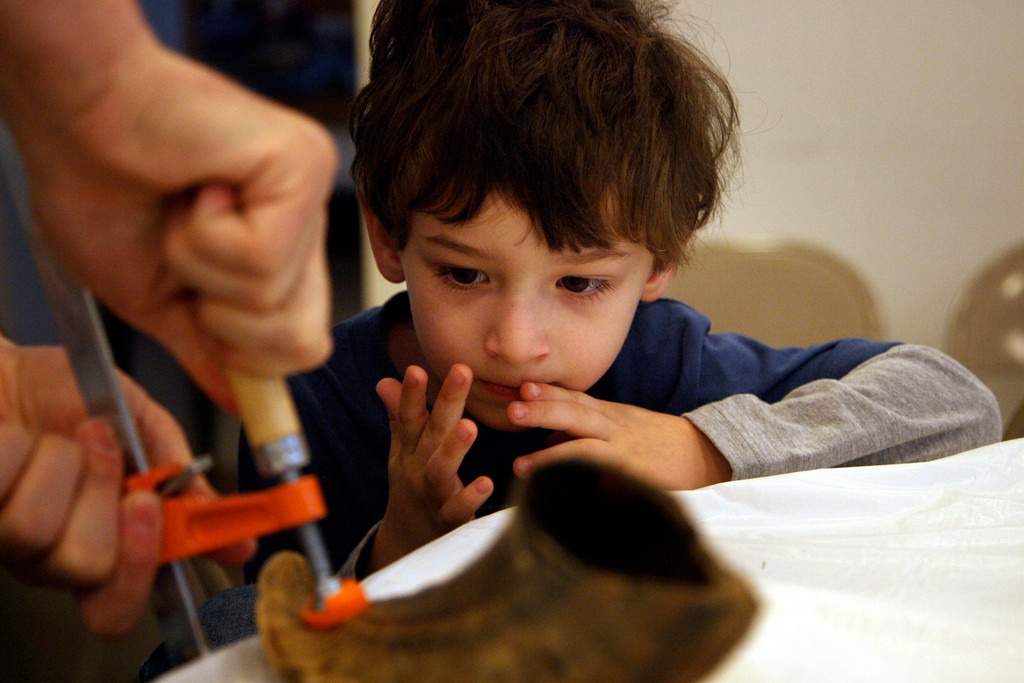This trumpet may be sacred, but making one can be fun
The long, twisty shape of a shofar might make the instrument look complex and difficult to produce, but on Sept. 18, more than 20 participants gathered at Chabad Lubavitch of Riverdale to fashion the ceremonial horns, blown during the Jewish High Holidays of Yom Kippur and Rosh Hashanah to symbolize a cry to God.
The Shofar Factory, which has been coming to Chabad Lubavitch for 19 years, is a hands-on workshop aimed at teaching participants how to make their own instrument. Armed with a table full of twisted, rough rams’ horns, a sanding machine, a drill, some saws and lots of patience, Mendel Notik, a student rabbi from Brooklyn, shared the secrets of his painstaking art.
Here’s how (if you have lots of time and access to dead animals) you can do it, too:
Find a dead ram
Although many different types of animals are used to make shofars, rams’ horns are preferable because they are long and curved. The horns can only be taken from dead animals so many go to slaughterhouses to get them. Do not use a bull, as that is not kosher.
Remove the inside bone
The horns of many animals have a thick, white bone inside them. To remove it, boil the horn with chemicals, such as lye. When the bone becomes soft and loose, it can be pulled out, leaving a hollow shell that will, with any luck, become the shofar. Sometimes, the soaking is also used to remove excess meat that may have been left on the horn during removal from the animal.
Measure
The non-hollow end of the horn must be sawed off so air can move through it and make a sound. To figure out where to cut, Mr. Notik recommended sticking a pipe cleaner inside and using that to measure where the hollow opening ends and the solid part begins.
Saw away
After you’ve figured out where to cut, saw off the non-hollow tip. This can be more difficult than it sounds. During the demonstration, numerous participants spent several minutes hacking away at their horns, only to realize the holes they had made by cutting off the tip were too small. If that happens to you, use a drill to enlarge the hole.
Assess the opening
Once you’ve got what you think is an adequate-sized hole, pour some water into the horn to see if it comes out the other end. If it does not, push a pipe cleaner inside to remove the “schmutz.” Repeat as many times as necessary.
Sand the sides
Sand down the small end of the horn so the bone becomes narrower. This will make it easier to blow.
Test it out
Making shofars is a fairly exact art that requires a lot of patience. Many of the horns created at the workshop did not make the right noise or any at all. If the horns have any other holes besides the two at either end, you must start over. Good luck!













